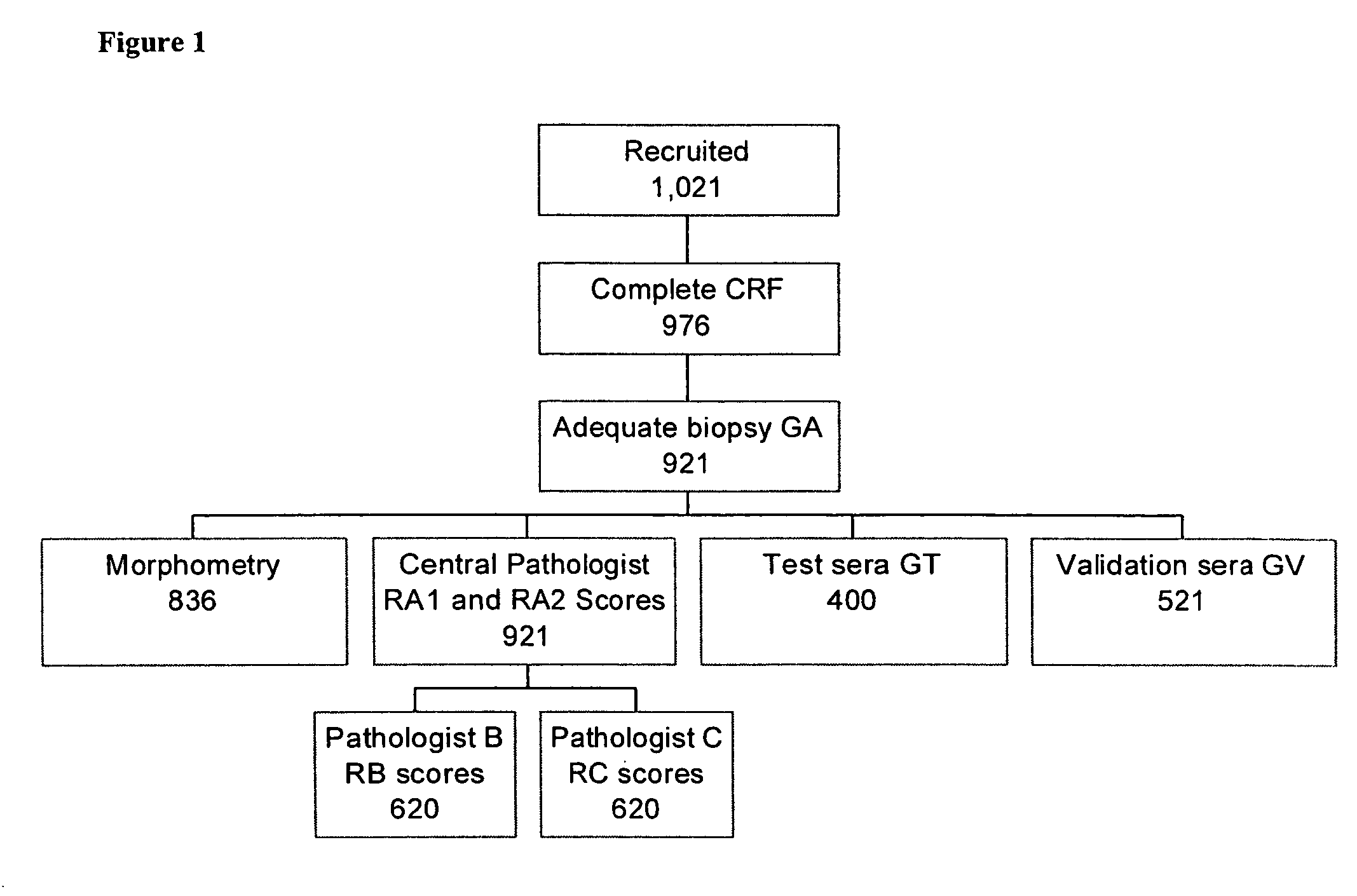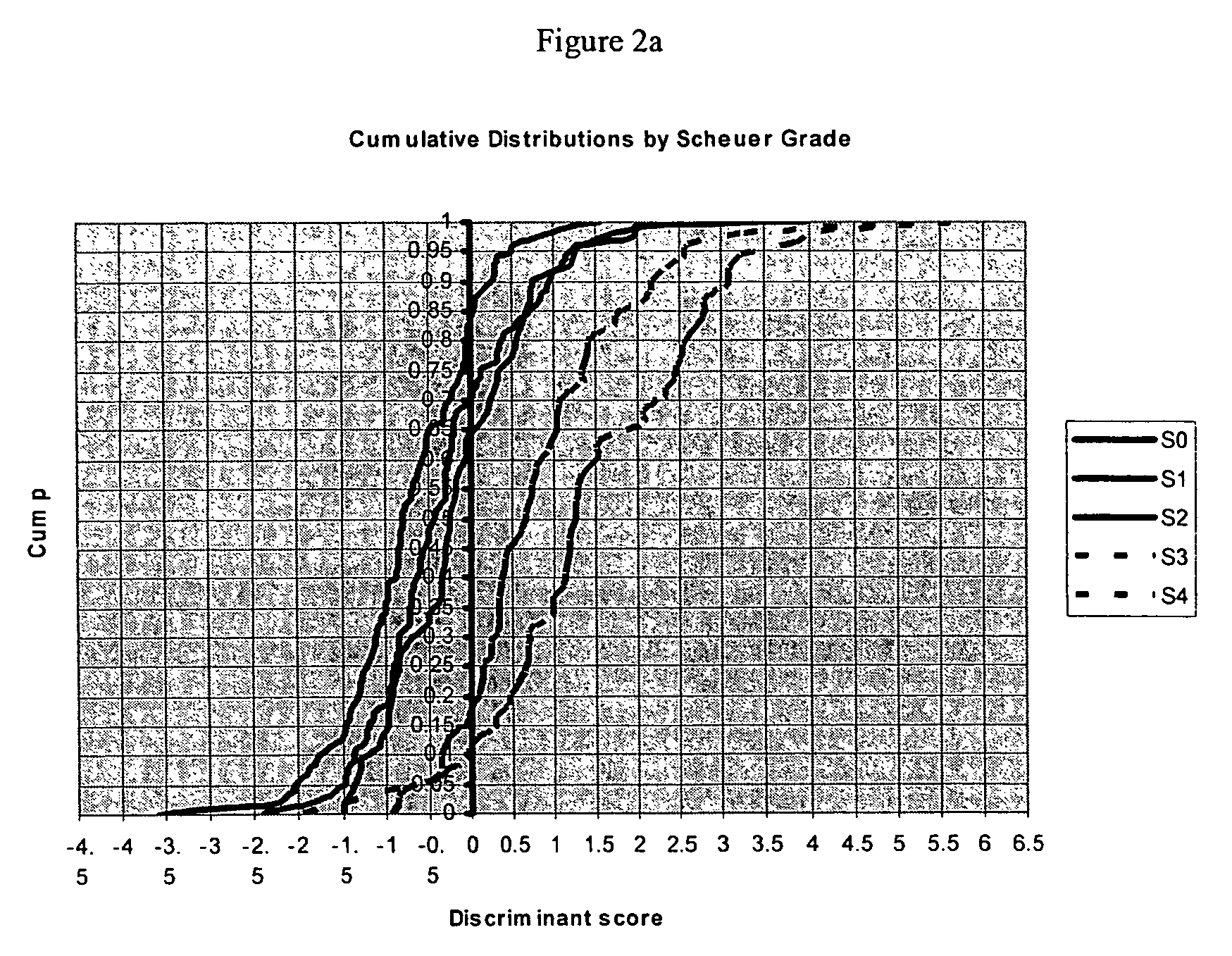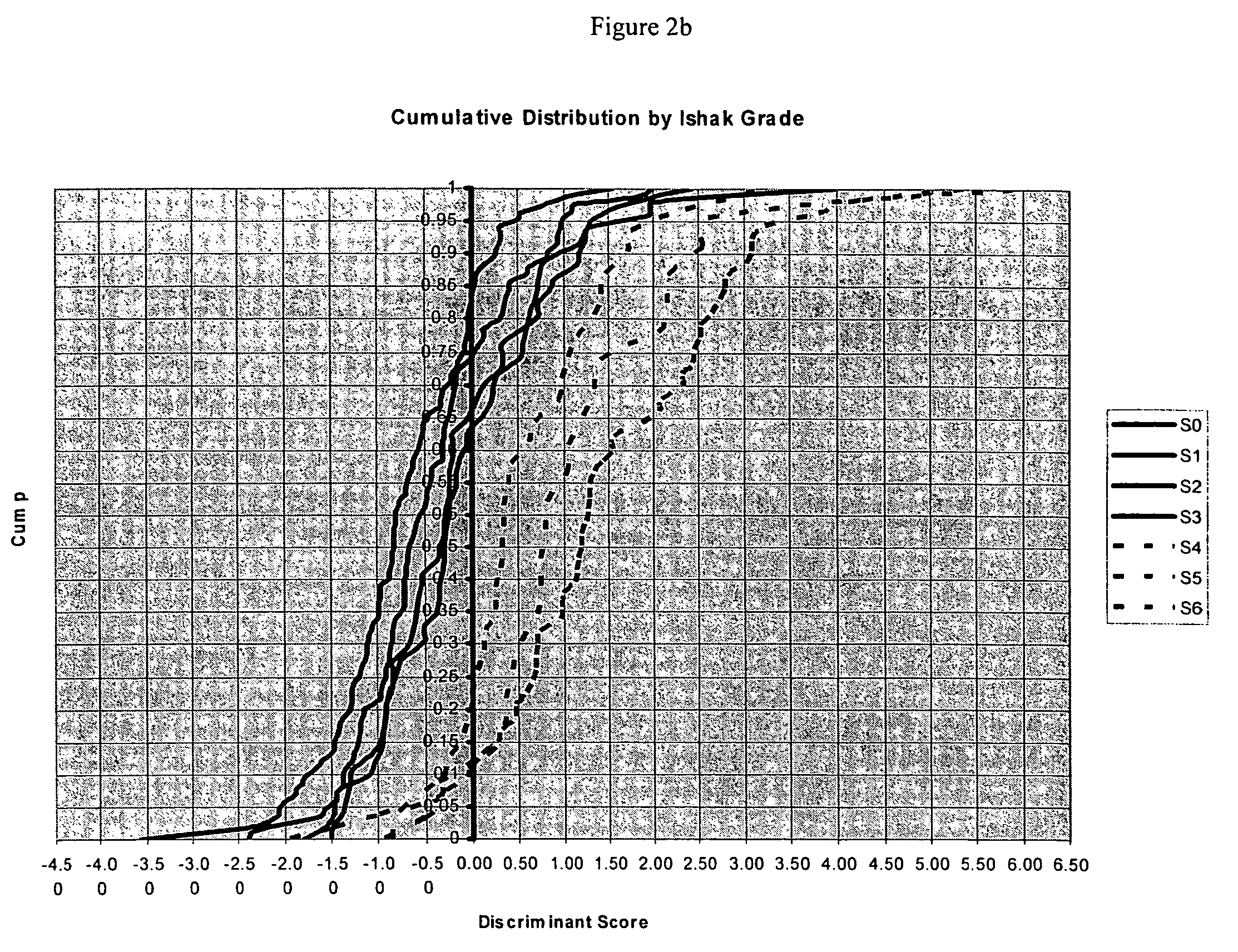Liver disease-related methods and systems
a technology for liver disease and liver cancer, applied in the field of liver disease-related methods and systems, can solve the problems of liver cancer and death, etc., and achieve the effect of convenient point-of-care or remote diagnosis
- Summary
- Abstract
- Description
- Claims
- Application Information
AI Technical Summary
Benefits of technology
Problems solved by technology
Method used
Image
Examples
Embodiment Construction
[0058]As used herein, the following terms have the following respective meanings.
[0059]“Antibody” means any antibody, including polyclonal or monoclonal antibodies or any fragment thereof, that binds to patient diagnostic serum marker epitopes. Monoclonal and / or polyclonal antibodies may be used in methods and systems of the invention. “Antibody” or other similar term as used herein includes a whole immunoglobulin that is either monoclonal or polyclonal, as well as immunoreactive fragments that specifically bind to the marker, including Fab, Fab′, F(ab′)2 and F(v). The term“Antibody” also includes binding-proteins, especially hyaluronic acid binding protein (HABP). Preferred serum marker antibodies are described hereinafter.
[0060]The human fluid samples used in the assays of the invention can be any samples that contain patient diagnostic markers, e.g. blood, serum, plasma, urine, sputum or broncho alveolar lavage (BAL) or any other body fluid. Typically a serum or plasma sample is ...
PUM
| Property | Measurement | Unit |
|---|---|---|
| volume | aaaaa | aaaaa |
| volume | aaaaa | aaaaa |
| concentration | aaaaa | aaaaa |
Abstract
Description
Claims
Application Information
 Login to View More
Login to View More - R&D Engineer
- R&D Manager
- IP Professional
- Industry Leading Data Capabilities
- Powerful AI technology
- Patent DNA Extraction
Browse by: Latest US Patents, China's latest patents, Technical Efficacy Thesaurus, Application Domain, Technology Topic, Popular Technical Reports.
© 2024 PatSnap. All rights reserved.Legal|Privacy policy|Modern Slavery Act Transparency Statement|Sitemap|About US| Contact US: help@patsnap.com










